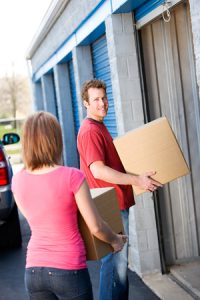 Whether you need to pack a few items to put in the attic, send some boxes to a self storage unit to clear the house of clutter or pack everything you own in order to move, you want to do it right. This means packing carefully and thinking ahead. Take a few precautions to help prevent damage and make it easier to find things later. When summer rolls around, you want to be able to find the other half of your wardrobe without having to open and move stacks of boxes that weren’t clearly labeled.
Whether you need to pack a few items to put in the attic, send some boxes to a self storage unit to clear the house of clutter or pack everything you own in order to move, you want to do it right. This means packing carefully and thinking ahead. Take a few precautions to help prevent damage and make it easier to find things later. When summer rolls around, you want to be able to find the other half of your wardrobe without having to open and move stacks of boxes that weren’t clearly labeled.
Guidelines to keep in mind as you pack:
- To aid in stacking, use same-size boxes when possible.
- Avoid storing items in plastic bags as they are less sturdy and could trap moisture.
- Fill each box completely to prevent the top or sides from crushing. If your box is filled with odd-shaped or loose items like glassware or toys, fill the open spaces with crumpled paper, bubble wrap or other packing material.
- Don’t fill boxes too full. This may cause them to burst.
- Don’t make boxes too heavy to move. Use larger boxes for things that don’t weigh much and smaller ones for the heavy stuff.
- Use the right type of box or packing crate. For instance, use a heavy-duty box for your books as this is less likely to break than a standard box. You still need to be careful not to overfill it, though. Cell kits may work best for stemware or knick-knacks. Wardrobe boxes allow you to hang up clothing and fabrics while in storage.
- Stack books; don’t stand them on end as this could damage the spines.
- Stack plates on end. Wrap dishes individually and place like-sized items together. Nest individually wrapped cups together.
- Wrap framed art in bubble wrap. Look for protective cardboard or plastic corners at your packing supply store.
- Criss-cross masking tape across the face of mirrors or glass-covered art.
- Store framed mirrors, photographs and artwork vertically rather than flat.
- Label boxes clearly and on more than one side. Consider providing a general description like ‘kitchen goods’ and then providing a short inventory such as ‘potholders, towels, aprons, silverware’ so that no one opens this kitchen box when they need the pots and pans. Be sure to mark boxes full of breakables as ‘fragile.’
- Clean items like clothing, blankets, drapery or furniture before packing them to prevent germs and dirt from being transported to a new location and odors from spreading throughout your storage unit.
- Polish wood before you pack to provide a little extra protection from the elements.
- Treat leather items with a specially made conditioner before placing them in storage.
- Wipe metal objects with machine oil or another type of rust preventative.
- Take apart items like bed frames and tables, and remove lampshades from lamps. This will help protect them from breaking and make them easier to move.
- Cover furniture with sheets or tarps to protect them from stains, tears and scratches.
- Place heavy items on the bottom of your moving van or self storage unit.
- Place least used items in front of the van so they can easily be placed behind other items in your new garage or self storage unit.
- Place valuable items like your television behind other items so that they will be more difficult to see and to steal.
- Place boxes of fragile items on top of other boxes.
- Consider the environment where you plan to store your valuables. Will it be very hot or cold? Consider renting a climate controlled storage room for items that could be damaged by extreme temperatures or humidity. This includes things like software, paper, electronics or clothing. Some items do best in cold storage such as wine and furs. In self storage units without climate control consider using a dehumidifier.
- When choosing a storage unit, factor in a little more room than your belongings take up in order to allow space for you to walk between stacks of items. This will help you to find what you need after you store it. Leave a little room between the walls and the stored goods to improve ventilation.
- Take a little time to plan and organize as you pack. This should make it easier to finds things in the future and less likely that anything will get damaged during a move or while in storage.
